Next Tri-City Amateur Radio Club meeting
7:00pm Monday, Nov 3, 2025
Confluent Makerspace
285 Williams Blvd
Richland, WA
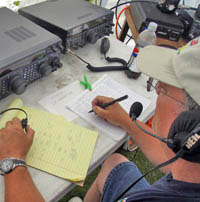
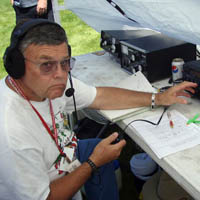
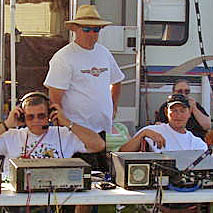
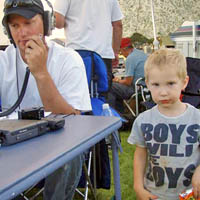
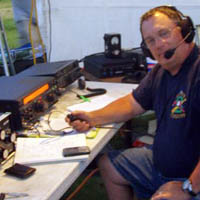
The Tri-Cities Amateur Radio Club (TCARC) has a long history of having one or more VHF/UHF repeaters located on the highest mountaintop within the local area. Rattlesnake Ridge/Mountain, located about 20 miles WNW of the Tri-Cities at about 3500 ft. or 3000 ft. above the mean altitude of the cities. From the early 1960's until the early 2000's we enjoyed our own site and small 8ft x 10ft guyed repeater building (150+ MPH winds) well away from the other commercial and Government radio sites on the hilltop. The site had been a commercial radiotelephone and microwave relay point for Columbia Communications and Ron Strait worked for them, and initiated the transfer of the assets and approval by the Atomic Energy Commission, the government entity operating the Hanford site at the time.
The first repeater on the site and active in the Tri-Cities was in the 6M wide-band FM, with input on 52.525MHz, the ARRL designated 6M FM calling frequency, with output on 53.29Mhz. These frequencies were chosen because when the 6M FM skip came in, the repeater rebroadcast it to us down in the "low lands." Six meter duplexers at the time were huge and very expensive, as they are now, thus this repeater operated with transmitter and receiver on separate antennas separated horizontally by about 100 yards. The receiver was in the guyed building with the antenna on a 10ft piece of 1 1/2" thick-walled water pipe. The antenna was a quarter wave ground plane made with a 108" CB mobile whip (with the big heavy spring) cut down to 6M.
Power and audio was cabled the 100 yards to the transmit site. To reduce the voltage loss on the 100 yards of electrical wire, a step-up transformer was used to raise the voltage from 110vac (nominal) to about 440vac, reducing the current thus the voltage loss across the distance. An identical step-down transformer was used to bring it back down to 110vac at the transmit site. Transmit antenna was another cut-down CB mobile whip on a piece of guyed pipe about 6 ft above the ground.
Obsolete/surplus General Electric 2-way police mobile radios (1940's era- AKA coffin boxes) were pressed into repeater service, with original vibrator power supplies and dynamotor transmitter high-voltage replaced with appropriate amateur operator built power supplies for commercial power use. Tubes of course, transistors hadn't been invented when these were made. There was no building at the transmit site- transformers, transmitter and associated electronics were housed in a small metal box like a footlocker.
During the 1960's there were no 6M-FM amateur radio vendors, thus hams used converted surplus commercial 2-way radios typically made by Motorola and General Electric. Very popular in the Tri-Cities were tthe Motorola 1/4 watt output "handheld" radios (handheld = box with a handle, miniature tubes, 160vdc high voltage battery & D cells for tube filaments), Motorola Model FM TRU 80D trunk mounts and General Electric pre-progress line "coffin box" radios. By the later 60's we had 20-25 active users on this repeater, including several from up the Yakima Valley & Yakima, Pendleton, Walla Walla and everywhere in between. The author was able to work this repeater from the higher areas of Pullman, WA mobile, and from his dorm room on the WSU campus.
In the early 1970's, transistorized FM radio equipment specifically made for amateurs became available and the commercial 2-way radio vendors began producing transistorized & hybrid repeaters, convertible to the ham bands. The TCARC installed the first 2M repeater on Johnson Butte, made with transmitter and receiver taken from a converted Motorola 80D. Signals were good in the Tri-Cities and surrounding area, but being substantially lower than Rattlesnake, range was limited.
The Rattlesnake site needed a 2M-FM repeater, and Ron Strait came up with receive & transmit boards plus heat sinks out of a Motorola Micor transistorized mobile. Cases were fabricated, and donations were solicited for a commercially made bandpass/bandreject duplexer. Twenty feet of Rohn 25G with a 2M tip-mounted antenna was installed, and with new FCC rules enacted, a CW ID'er, designed and built by Dave Martin was included. ARRL was just beginning to implement area repeater frequency coordinating committees, and we were assigned the 147.00-147.60 Mhz pair. Unfortunately, this created a intermodulation problem in the club's 04/64 repeater on Johnson Butte.
The solution- the new Rattlesnake Mtn 2M repeater was moved to the current assignment of 146.16/146.76MHz pair, and the Motorola equipment was replaced with a higher power (90 watts continuous) hybrid commercial repeater from GE. The receiver was all transistorized, and the transmitter was transistorized until the final output stage. This 40 year old+ 2M repeater equipment continued to operate until replaced by the more modern Kenwood in 2012.
During the period from 1970 until 2010, TCARC continued to utilize and expand the equipment. A 2M RTTY repeater was installed, co-located in the 1970s, and became a multi-mode repeater that would pass both RTTY and AX.25 packet radio with bulletin boards, store & forward, etc. in the 1980s. Antenna towers and antennas were improved, starting with a 60 ft tower and new 20ft Sinclair top mounted for the 146.16/.76 repeater, and eventually a 100 ft Rohn 65G tower.
Native Peoples refer to Rattlesnake Mountain as Lalíik, meaning "land above the water". Some historians speculate that the origin of the name Lalíik refers to the inundation of the Columbia River Plateau during the Missoula Floods, as Rattlesnake would have been one of the few mountains not completely inundated by flood waters reaching depths of 1200 ft.
In 2008, the Dept. Of Energy, federal managers of the Hanford Reservation, including the top and East side Rattlesnake Ridge, under pressure from Environmentalist to protect endangered plant species, and pressure by native peoples of the Columbia Plateau, including the Nez Perce, Umatilla, Wanapum, Cayuse, Walla Walla, and Yakama Nations, would not renew the permit, license or easements for the Battelle Memorial Institute and most of the other entities using the mountain. The area would instead be returned to its natural conditions, citing the cultural sensitivity of the area. TCARC lost its separate repeater site.
As significant commercial, federal, state, county and cities communications and safety systems would be compromised, and a rebuild of the infrastructure with lower level communications facilities would be very expensive, a central communications facility was negotiated in which all communications entities would be located. The new facility, managed by Energy Northwest (nuclear plant #2), would include two very large and tall shared communications towers.
Thus in 2010, TCARC installed their newly acquired Kenwood 2M & 70CM 40W repeaters, with upgraded duplexers, extra filters, circulators and .... required to operate in a close proximity to over 100 other RF radiators on nearby frequencies. Being on the very low end of the pecking order of users, our antenna locations on the tower are not high (about 10% of the tower heights) and on the opposite side from the Tri-Cities on 3 ft diameter tower legs. In addition, since these monster towers are much closer to a ridge peak between the tower and Tri-Cities, and being low on the towers, substantial signal is lost towards the Tri-Cities area when compared to the saturating signals we enjoyed at our original site.
This is not to say the repeaters are unusable in the Tri-Cities. They are easily reachable with a good mobile radio/antenna installation in most TC locations, most base stations with outside antennas, but low power handhelds have problems accessing the repeaters in some areas of the Tri-Cities.